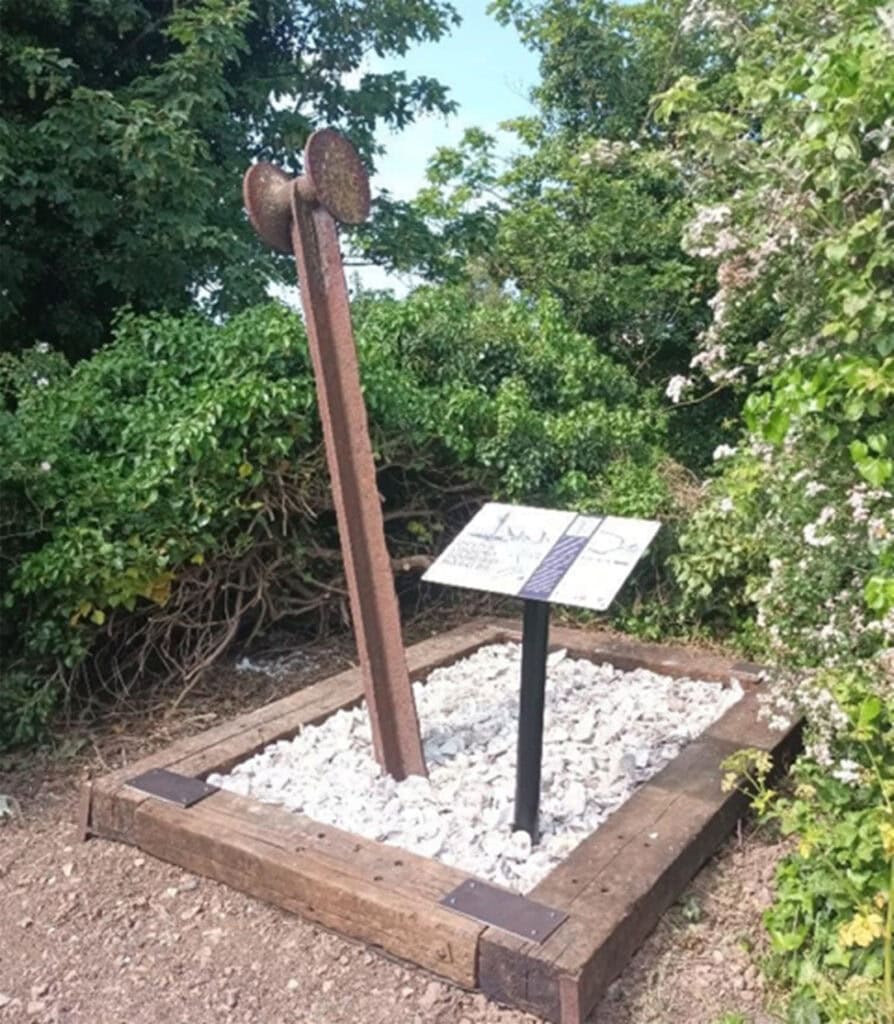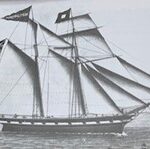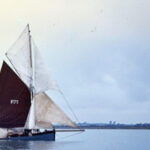Gamecock is one of the finest examples of her type, but why build a boat dedicated to a single purpose – the dredging of oysters? The answer is money.
Gamecock is a graceful boat with curved lines running from bow to stern but her design is very functional. The hull is lacking in space because she rarely worked overnight. Her single keel was protected by a metal gutter to avoid damage on the hard sea bed. Most of the work was undertaken on the deck so it was extended to the rear by a counter-stern. Her design was the result of her function and working environment.
Gamecock was not built until 1906/7 when there were still over 70 Whitstable Oyster Yawls in the fleet. In 1862/63 The Company of Free Fishers and Dredgers of Whitstable sent 60 million oysters to market at a value today of £91,000, equivalent to £11.5 million today. Not every year was as bountiful but Allan Collard, writing just before Gamecock was built, reckoned that the Whitstable Company annually sent 10 to 15 million oysters to market: (quoted by Derek Coombe in Fishermen from the Kentish Shore, published by Meresborough Books 1989).
With such a precious product lying on the sea bed there was more than one company interested in dredging the Swale, not to mention possible poachers. The main competitors were The Faversham Oyster Co, The Ham & Sea Salter Co, and The Whitstable Oyster Company. To mark their respective territories the oystermen agreed ‘transit lines’. David Roberts, Chair of Whitstable Improvement Trust, has recently researched these navigation aids which he explains as follows.
The old iron post, now leaning over, situated at the end of Island Wall, on the edge of the Village Green at Saxon Shore, has been in this position since its installation in 1865. It can be safely assumed that there was a marker beacon of some kind in this location long before this date.
This post functioned as the front marker (landmark) which could be lined up, by fishermen out at sea, with a back marker called the “Cross” (removed in the 1960’s) situated on higher ground just beyond the railway foot bridge at the end of West Cliff. This line, called a transit line, defined the boundary between the beds owned by the Company of Free Fishers and Dredgers of Whitstable and the Seasalter Oyster Fishery Company.
The Whitstable Improvement Trust assisted by Canterbury City Council, The Whitstable Oyster Company, The Whitstable Museum and Timescapes Kent considered it important to bring the existence of the last surviving oyster bed boundary marker to the attention of the public by recently making it more visible and installing two information boards to explain its significance.


The map shows the invisible boundaries that were found if you positioned your craft so that it was in line with the two marker posts.
It was one thing to mark out the territory, it was another to police it, especially at night. So the oyster companies employed ‘watchboats’ to guard their oyster beds. These were usually vessels too old for work and the crew were paid a bonus for being on duty overnight or at weekends.



